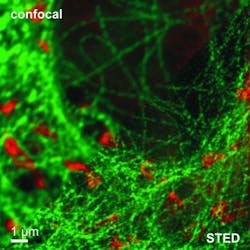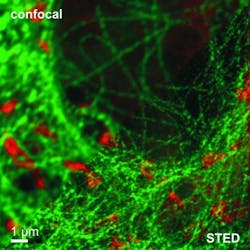Fluorescence imaging method visualizes nine structures in one measurement
A research collaboration involving the University of Würzburg (Würzburg, Germany), the University of Göttingen (Göttingen, Germany), and PicoQuant (Berlin, Germany) has discovered a novel strategy for fluorescence lifetime imaging (FLIM) that allows visualizing nine different target molecules at the same time.
Related: Fluorescence 'lifetime' moves toward clinical application
As a fundamental imaging technique in life sciences, FLIM makes it possible to visualize structures and processes in cells by exciting molecules with light and employing the lifetime information of the triggered fluorescence. The newly devised approach, named spectrally resolved FLIM (sFLIM), uses three lasers with different wavelengths pulsing in an alternating pattern for exciting the molecular labels. As these labels exhibit subtle differences in their emission spectra and fluorescence decay patterns, the collected data can be analyzed through a software algorithm, allowing distinction between them with unparalleled precision.
The research team managed to label, image, and identify nine different structures in a cell simultaneously, including the F-Actin protein structure of the cytoskeleton, the nuclear membrane, or newly created DNA.
The high sensitivity of sFLIM also allows using the same fluorescent dye to label three different cell structures at once, with the ability to still clearly distinguish them because of slight fluorescence lifetime variations induced by the chemical environment. The method was realized with the MicroTime 200 microscopy platform and the SymPhoTime 64 data acquisition and analysis software.
Full details of the work appear in the journal Nature Methods; for more information, please visit http://dx.doi.org/10.1038/nmeth.3740.

